Key Takeaways
1. Overcome speaking anxiety by reframing and managing physical symptoms
"With a bit of effort, we can manage our spontaneous speaking anxiety so that it doesn't manage us."
Anxiety is normal. Public speaking anxiety is extremely common, affecting most people to some degree. The key is learning to manage it rather than eliminate it entirely.
Reframe anxiety as excitement. Research shows that telling yourself "I am excited" before speaking can improve performance. Anxiety and excitement produce similar physical symptoms, so cognitively reframing the emotion can shift your mindset.
Use physical techniques:
- Take slow, deep breaths to calm your nervous system
- Hold something cold to reduce sweating and blushing
- Adopt an expansive posture to project confidence
- Speak more slowly and pause to regulate your pace
2. Embrace imperfection and spontaneity in communication
"When you're trying to be original, you sound like everyone else trying to be original. But when you're obvious, you're yourself. And that's what's genuine."
Perfectionism hinders spontaneity. Trying to get everything "right" increases anxiety and stifles natural expression. Give yourself permission to be imperfect and take conversational risks.
"Dare to be dull." Don't pressure yourself to be witty or fascinating. Simple, straightforward communication is often most effective. Trust that your authentic self is interesting enough.
Make "missed takes," not mistakes. View errors as learning opportunities rather than failures. Each interaction is a chance to experiment and improve your spontaneous communication skills.
3. Adopt a growth mindset and see speaking as an opportunity
"By shifting our mindset, we can train ourselves to greet impromptu interactions not as threats but as opportunities for learning, collaboration, and growth."
Reframe challenges as opportunities. Spontaneous speaking situations aren't threats, but chances to learn, connect, and make a positive impact. This mindset shift reduces anxiety and increases engagement.
Embrace a growth mindset. Believe that your communication skills can improve with practice. View feedback and mistakes as valuable for your development.
Focus on your audience. Shift attention away from yourself and onto how you can best serve your listeners. This reduces self-consciousness and increases your ability to connect.
4. Listen actively and create space for reflection
"To truly connect with our audiences, we have established the importance of fighting distraction and orienting ourselves toward them."
Practice active listening. Give your full attention to others, avoiding distractions. Notice non-verbal cues and emotional subtext. Reflect back what you hear to ensure understanding.
Create space for reflection:
- Slow down and pause between thoughts
- Ask clarifying questions
- Paraphrase to check understanding
- Comment on what hasn't been said
Balance external and internal listening. Tune into both the speaker and your own internal reactions and insights. This dual awareness enhances your ability to respond thoughtfully.
5. Structure impromptu remarks for clarity and impact
"Structure doesn't impede spontaneous communication—it enables it."
Use simple frameworks. Having go-to structures allows you to organize thoughts quickly in the moment. Some versatile options include:
- What-So What-Now What
- Problem-Solution-Benefit
- Past-Present-Future
- Comparison-Contrast-Conclusion
Start with a road map. Briefly outline your main points at the beginning. This orients your audience and helps you stay on track.
Make clear transitions. Connect ideas explicitly, helping your audience follow your logic. Use transitional phrases and summarize key points.
6. Focus your message for maximum relevance and accessibility
"1,000 songs in your pocket."
Be precise about your goal. Clarify exactly what you want your audience to know, feel, and do as a result of your communication.
Make it relevant. Frame your message in terms of your audience's interests, needs, and motivations. Answer the "Why should I care?" question.
Enhance accessibility:
- Minimize jargon and explain necessary technical terms
- Use concrete examples and analogies
- Break complex ideas into smaller chunks
- Lead with the most important information (BLUF: Bottom Line Up Front)
Be concise. Edit ruthlessly, keeping only what's essential to your message. Leverage context to convey meaning with fewer words.
7. Master small talk by making it about others
"The First Commandment of Small Talk, which is . . . Make It about Them, Not You"
Ask open-ended questions. Encourage others to share by asking questions that can't be answered with a simple yes or no. Show genuine curiosity about their experiences and perspectives.
Use supportive responses. Instead of shifting the conversation back to yourself, invite the other person to elaborate. Try phrases like "Tell me more about that" or "How did you feel when that happened?"
Practice active listening. Give your full attention, maintain eye contact, and use non-verbal cues to show you're engaged. Reflect back what you've heard to ensure understanding.
Find common ground. Look for shared interests or experiences to build rapport. Use these connections to deepen the conversation naturally.
8. Deliver memorable toasts and tributes using the WHAT framework
"To help break our habit of focusing on our own worries and needs, we can think of toasts, tributes, and introductions as gifts we bestow on our audience and the people or groups we are acknowledging."
WHAT framework:
- Why are we here: Establish context for the gathering
- How are you connected: Explain your relationship to the honoree
- Anecdotes or learnings: Share brief, meaningful stories or lessons
- Thank: Express gratitude and offer well-wishes
Keep it brief and focused. Aim for a few minutes at most. Choose one or two key points or stories to highlight.
Be emotionally appropriate. Consider the tone of the event and your relationship to the honoree. Balance sincerity with humor as appropriate.
9. Pitch ideas effectively with Problem-Solution-Benefit structure
"To succeed in tackling symptoms of anxiety, we must also work to make these interventions stick."
Problem: Clearly define the issue or opportunity, framing it in terms relevant to your audience. Use data or examples to illustrate its importance.
Solution: Present your proposed fix, explaining how it addresses the problem. Be specific about implementation steps.
Benefit: Highlight the positive outcomes of adopting your solution. Quantify the impact when possible and tie benefits to your audience's goals.
Use analogies to make your pitch more relatable and memorable. Compare your solution to successful approaches in other domains.
Address potential obstacles to show you've thought through implementation challenges. This demonstrates thoroughness and increases credibility.
10. Handle Q&A sessions confidently using the ADD method
"ADD value."
ADD framework:
- Answer the question directly in one sentence
- Detail with a specific example or evidence
- Describe the relevance or value to the asker
Prepare for likely questions. Anticipate potential queries and practice concise responses using the ADD structure.
Stay in control:
- Set clear boundaries for the Q&A session (time, topic scope)
- Redirect off-topic questions politely
- Use clarifying questions if needed
- Have a strong closing statement prepared
11. Provide constructive feedback using the 4 I's approach
"When we regard feedback as an invitation to solve a problem together, we shift the dynamics of the conversation."
4 I's framework:
- Information: Provide specific, objective observations
- Impact: Explain the effect of the behavior or action
- Invitation: Extend a collaborative request to address the issue
- Implications: Detail positive and/or negative consequences
Be timely and contextually appropriate. Give feedback as soon as possible after the event, but ensure the setting is conducive to a productive conversation.
Balance positive and constructive feedback. Start with genuine praise to increase receptivity. Ensure the importance of positive and constructive feedback is roughly equivalent.
Focus on behavior, not personality. Frame feedback in terms of specific actions that can be changed, rather than innate traits.
12. Apologize sincerely and effectively with the AAA framework
"Apologizing isn't weakness. Rather, it's one of the best ways available to us to show that we care and are striving to improve."
AAA framework:
- Acknowledge the specific action and take responsibility
- Appreciate the impact on others, showing empathy
- Amends: Detail how you will make it right or prevent future occurrences
Be timely and sincere. Apologize as soon as possible after the offense. Avoid excuses or minimizing the impact.
Keep it concise and focused. Stick to the essential elements without over-explaining or repeating yourself excessively.
Follow through on your commitment to change. Actions speak louder than words. Demonstrate through your behavior that you've learned from the mistake.
Last updated:
FAQ
What's Think Faster, Talk Smarter about?
- Focus on Spontaneous Speaking: The book provides strategies to improve spontaneous speaking skills, especially in high-pressure situations. It addresses common challenges like anxiety and lack of preparation.
- Six-Step Methodology: Matt Abrahams introduces a six-step process to enhance impromptu communication, focusing on calming anxiety, redefining mindsets, and structuring responses.
- Real-Life Applications: The book offers practical tools for various scenarios, such as small talk and Q&A sessions, helping readers navigate everyday speaking challenges.
Why should I read Think Faster, Talk Smarter?
- Overcome Communication Anxiety: The book offers actionable strategies to manage anxiety when speaking spontaneously, helping to build confidence.
- Enhance Communication Skills: It provides a structured approach to improve impromptu speaking abilities in both professional and social settings.
- Practical Tools and Techniques: Readers gain access to a variety of tools, including specific structures for different speaking scenarios, making it a valuable resource for personal and professional development.
What are the key takeaways of Think Faster, Talk Smarter?
- Six Steps to Success: The book outlines six essential steps: Calm, Unlock, Redefine, Listen, Structure, and Focus, addressing barriers to effective spontaneous speaking.
- Mindset Matters: Emphasizes adopting a growth mindset and focusing on the audience, leading to more authentic communication.
- Structure is Key: Highlights the importance of having a clear structure in spontaneous communication, using frameworks like What–So What–Now What.
What are the best quotes from Think Faster, Talk Smarter and what do they mean?
- “Communication is not just about speaking; it’s about connecting.”: Emphasizes that effective communication involves building relationships and understanding others.
- “Mistakes are not failures; they are opportunities to learn.”: Encourages viewing errors as learning experiences, promoting a growth mindset.
- “Structure your spontaneity.”: Captures the book's core message that even spontaneous communication benefits from preparation and structure.
What is the Think Faster, Talk Smarter methodology?
- Six Steps: The methodology includes Calm, Unlock, Redefine, Listen, Structure, and Focus, each addressing specific challenges in spontaneous speaking.
- Anxiety Management: The Calm step focuses on managing anxiety through mindfulness and deep breathing, helping speakers feel more at ease.
- Effective Listening: The Listen step emphasizes active listening to gauge audience needs and tailor responses effectively.
How can I calm my anxiety when speaking spontaneously according to Think Faster, Talk Smarter?
- Mindfulness Techniques: Practicing mindfulness helps acknowledge and manage anxiety, reducing its impact.
- Breathing Exercises: Techniques like inhaling for three counts and exhaling for six can calm the nervous system.
- Positive Self-Talk: Using affirmations like “I have value to add” can boost confidence and focus.
What are some effective structures for spontaneous speaking in Think Faster, Talk Smarter?
- What–So What–Now What: This structure involves explaining the topic, its importance, and actions to be taken, providing a clear framework.
- Problem–Solution–Benefit: Outlines a problem, presents a solution, and discusses benefits, useful in persuasive contexts.
- Comparison–Contrast–Conclusion: Compares and contrasts ideas before concluding, helping clarify complex information.
How does listening improve spontaneous speaking according to Think Faster, Talk Smarter?
- Enhances Connection: Active listening allows deeper connection with the audience, enabling message adjustment.
- Uncovers Insights: Listening gathers valuable information, leading to more relevant communication.
- Builds Trust: Demonstrating listening fosters trust and rapport, making the audience more receptive.
What mindset shifts are important for spontaneous speaking in Think Faster, Talk Smarter?
- From Fixed to Growth: Embracing a growth mindset reduces anxiety and increases engagement.
- From Self-Focus to Audience-Focus: Shifting focus to the audience reduces pressure and fosters collaboration.
- From “Yes, But” to “Yes, And”: Encourages openness and creativity, building on ideas rather than shutting them down.
What is the ADD method in Think Faster, Talk Smarter?
- Answer the Question: Provide a clear and concise answer to establish a direct response.
- Detail an Example: Support your answer with a specific example, adding depth and context.
- Describe the Value: Explain the relevance of your answer, helping the audience understand its importance.
How does the AAA structure help in making apologies according to Think Faster, Talk Smarter?
- Acknowledge the Action: Identify the behavior that caused offense and take responsibility.
- Appreciate the Impact: Express understanding of how your actions affected the other person, demonstrating empathy.
- Amends: Outline how you plan to make amends, reassuring commitment to improvement.
How can I practice the skills from Think Faster, Talk Smarter?
- Role-Playing: Simulate spontaneous speaking situations to build confidence and improve response times.
- Feedback Loops: Seek feedback from peers to gain insights into areas for improvement.
- Journaling: Reflect on speaking experiences to analyze what worked and solidify learning.
Review Summary
Think Faster, Talk Smarter receives mixed reviews, with an average rating of 3.75 out of 5. Readers appreciate the practical tips and structures for improving spontaneous communication, particularly in professional settings. Many find the book helpful for managing anxiety and structuring thoughts quickly. Some critics note that the content isn't groundbreaking, especially for those familiar with communication techniques. The book's emphasis on practice and real-world application is praised, while a few readers find the examples awkward or the content repetitive. Overall, it's considered a valuable resource for those seeking to enhance their speaking skills.
Similar Books


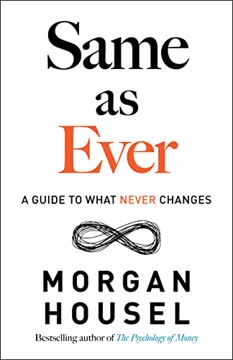

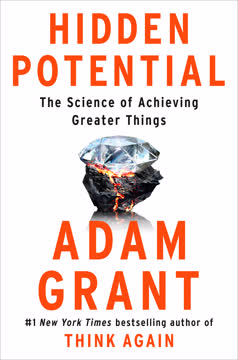
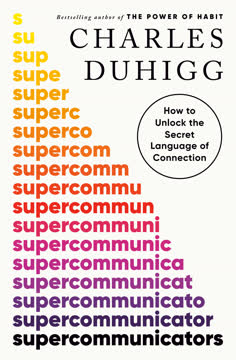
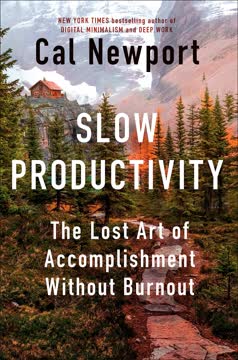
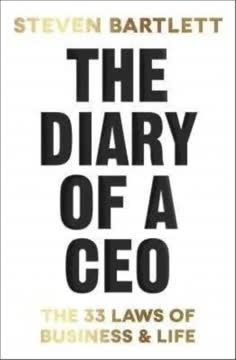
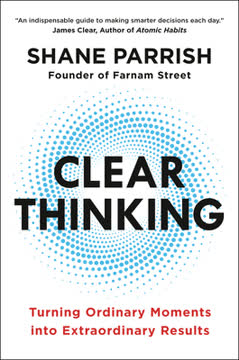
Download PDF
Download EPUB
.epub digital book format is ideal for reading ebooks on phones, tablets, and e-readers.




